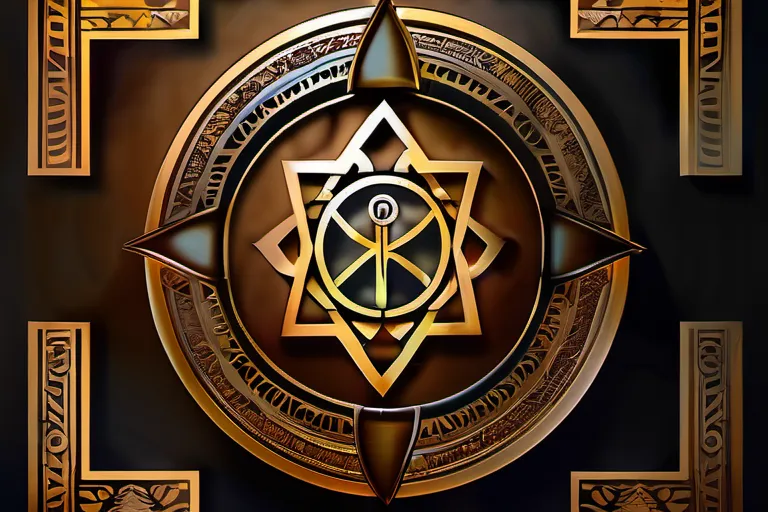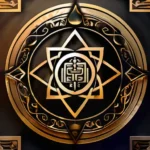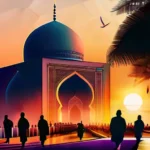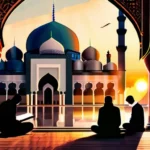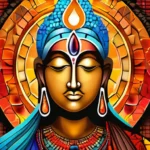Exploring the Influence of Early Religions on Contemporary Beliefs and Rituals
This article delves into the profound impact that ancient religions have had on modern religious practices. We will examine key aspects of these early belief systems, their evolution over time, and how they continue to shape contemporary beliefs.
The Origins of Ancient Religions
Imagine stepping back into time, where the world was a mysterious place filled with spirits and deities. The origins of some of the oldest known religions, such as animism, shamanism, and polytheism, lay in these early human experiences. How could these ancient practices possibly influence our modern lives?
Let’s start with animism. This belief system holds that everything in nature—trees, rocks, rivers, and even animals—are alive and possess a spirit. It’s easy to see how this idea could have a lasting impact on environmental consciousness today. Do we not often speak of the ecosystem as if it were a living entity? The reverence for nature inherent in animism might explain our modern push towards sustainable living.
Shamanism, another ancient practice, involves a spiritual leader who acts as a mediator between the human and spirit worlds. Could the concept of a sacred healer have roots in this tradition? Today, we see similar roles filled by therapists, counselors, and holistic practitioners. The idea that healing comes from a deep understanding of both physical and metaphysical realms is certainly an ancient one with contemporary relevance.
Polytheism, the belief in multiple gods or goddesses, can be traced back to many early civilizations. In our modern world, we often hear echoes of this tradition through mythology and folklore. Stories of Greek gods like Zeus and Apollo have become part of cultural heritage, influencing art, literature, and even marketing. The idea that there are numerous deities with different domains might inspire the diverse pantheons of superheroes in contemporary media.
So, how do these ancient religions impact modern practices? They offer a window into our past, revealing deep-seated beliefs and behaviors that continue to shape us today. Whether through environmental stewardship, spiritual healing, or mythological storytelling, these ancient traditions live on, reminding us of the interconnectedness of all things.
The Evolution of Ancient Religions
Imagine peering back into time, through millennia, to witness the birth and evolution of some of humanity’s oldest religions. The journey begins with ancient animism, where every tree, rock, and river held a spirit, a soul, almost like they were gods in themselves. As we move forward, these early beliefs transformed, intertwining and splitting into various forms that would shape future societies.
Shamanism, with its emphasis on spiritual healing and communication between the physical world and the supernatural realm, became a crucial part of many ancient cultures. It’s as if shamans were the bridges connecting the divine to the mortal, their practices blending seamlessly with everyday life. And then there was polytheism, where deities ruled over different aspects of nature and human existence, creating complex pantheons that mirrored the intricate societies they served.
Over time, these belief systems faced challenges and changes. With the rise of monotheistic religions like Judaism, Christianity, and Islam, many ancient practices were either suppressed or adapted. But the spirit of these old beliefs lingered on, influencing new ideas in profound ways. Think about it: could the concept of karma in modern Buddhism have its roots in the ancient belief systems that revered balance and harmony with nature?
The evolution of ancient religions is like a river flowing through time, sometimes broad and calm, other times turbulent and fast-moving. Each religion along this path has left an indelible mark on human culture and continues to shape contemporary beliefs and practices. As we explore the transformation from ancient animism to modern monotheism, we uncover layers of history that continue to influence our world today.
Ancient Religions in Modern Society
Imagine dipping your fingers into the vast pool of ancient wisdom, where beliefs and practices have been passed down through millennia like whispers in the wind. How does the most ancient religion impact modern practices? It’s a question that resonates deep within the human spirit, much like asking why we still visit ancient ruins filled with carvings and inscriptions. These symbols and rituals, once meant to connect us with the divine, continue to influence our daily lives in subtle yet profound ways.
Consider the symbol of the cross, a ubiquitous presence in modern Christianity. But did you know it originated from earlier religious practices? The ankh, an ancient Egyptian symbol for life, shares striking similarities with the Christian cross. Could this be more than mere coincidence? Perhaps these symbols carry echoes of our past, speaking to us across time and space.
Then there are rituals like fasting during Ramadan or lighting candles on Hanukkah. These practices can trace their roots back thousands of years to even older traditions. What compels people today to continue these ancient customs? It’s as if we are partaking in a grand cosmic dance, where each step is a echo from the distant past.
The concept of a cyclical universe or eternal cycles of rebirth found in Hinduism and other ancient religions has also found its way into modern thought. The idea that life continues beyond death, reincarnating through different forms, influences everything from contemporary spiritual practices to philosophical debates about existence.
These examples are just the tip of an iceberg. From the use of sacred geometry in architecture to the invocation of deities during festivals, ancient religious practices continue to shape our understanding of the world and our place within it. It’s a fascinating exploration that invites us to question: how much of ourselves do we carry from those distant times? And is there something timeless about these ancient beliefs that makes them resonate so strongly with us today?
So, next time you light a candle or cross your fingers in hope, take a moment to ponder the ancient roots intertwined within modern practices. They remind us that our journey as humans is not just forward but also deeply rooted in the past.
The Legacy of Ancient Religions
Imagine stepping back into time, to the cradle of civilization where ancient religions thrived and shaped the very fabric of human belief. How does this legacy manifest in our modern practices? The question itself is a journey through the corridors of history, seeking answers hidden in the shadows of today’s religious landscapes.
Take, for instance, the concept of sacred space. In ancient times, temples and shrines were centers where deities resided and where humans could connect with the divine. Today, churches, mosques, synagogues, and even natural settings serve similar purposes. Why do we still seek out these places of worship? Is it just a formality or is there an inherent need to find sanctuary in the sacred?
The rituals of ancient religions often revolved around nature, cycles of life, and seasonal changes. Modern practices have adapted these traditions into festivals that celebrate harvests, births, and even deaths. How do these rituals serve as more than mere celebrations? Do they hold deeper meanings related to our connection with the earth and each other?
Consider also the moral codes and ethical teachings of ancient religions. Principles like compassion, honesty, and non-violence are fundamental in many contemporary belief systems. These values have endured through centuries, influencing not just religious texts but also secular ethics. Can we truly separate these ethical teachings from their religious origins? Are they merely coincidental or do they stem from a deeper wellspring of ancient wisdom?
The metaphors of light and darkness, life and death, are as old as religion itself. In the modern world, these metaphors continue to shape our understanding of good versus evil, existence versus non-existence. How do these dualities play out in our daily lives? Do we still grapple with the same fundamental questions about what it means to be human?
The ancient religions also introduced concepts like pilgrimage and the journey toward enlightenment or salvation. In modern times, this quest for personal growth and spiritual fulfillment persists. Are these journeys merely personal quests or do they hold a larger societal significance? How do they reflect our deeper aspirations and fears?
As we navigate through the complexities of contemporary religious practices, it’s clear that ancient traditions continue to influence us profoundly. These influences are not just surface-level imitations but deep-seated transformations that shape our beliefs and behaviors. The legacy of these ancient religions is like a river that flows through time, enriching our spiritual landscapes and guiding us towards understanding the profound connections between past and present.
Comparative Analysis: Similarities and Differences
How does the most ancient religion impact modern practices? To answer this, let’s dive into a comparative analysis of key features in both ancient and contemporary belief systems. Imagine ancient religions as the roots of a vast tree—deep, strong, and intertwined with the very essence of human spirituality. Contemporary beliefs are like the branches reaching towards the sun, each leaf representing a unique interpretation or adaptation of these age-old traditions.
One striking similarity is the focus on ethical living. In many ancient religions such as Hinduism and Buddhism, concepts like dharma (duty) and karma (the law of cause and effect) guide moral behavior. These principles echo in modern secular ethics, where individuals often seek to live with integrity and contribute positively to society. Can we find a common thread between the spiritual obligations of an ancient monk and the corporate social responsibility of a contemporary business executive?
However, the differences are equally intriguing. While ancient religions often revolved around polytheistic or pantheistic deities, many modern practices have shifted towards monotheism. This transformation can be seen in the rise of Christianity and Islam, which have significantly shaped the world’s demographics and cultural landscapes. Yet, there’s a fascinating contrast: some contemporary belief systems are embracing more pluralistic approaches to spirituality, blurring the lines between different religions.
Another area where ancient and modern practices diverge is in their approach to rituals and symbolism. Ancient religions like those of Mesopotamia or Egypt often involved elaborate ceremonies and symbolic representations that were deeply integrated into daily life. Today, many contemporary beliefs have simplified these practices, perhaps due to the complexities of modern living or a desire for personal, intimate spiritual experiences.
Is it possible that in our quest for simplicity, we are losing some of the profound meanings and communal bonds that rituals once fostered? Or is this transformation part of a natural evolution towards more personalized and accessible forms of spirituality?
The comparison between ancient and modern practices not only highlights the enduring influence of early religions but also reveals how these beliefs continue to shape and reshape our understanding of the world. As we navigate the complexities of today’s globalized society, the lessons from the past can offer valuable insights into building more harmonious and spiritually rich futures.
The Future of Ancient Religions
How does the most ancient religion continue to shape our modern practices and beliefs? It’s like asking how the roots of a mighty tree can nourish a flourishing forest—its influence is pervasive yet often unseen.
Consider the rituals that have been passed down through generations. Are we not, in many ways, still practicing the same rites and ceremonies under different names? The act of lighting candles, ringing bells, or offering sacrifices might seem foreign to some, but they are remnants of ancient practices. Could these rituals be more than mere traditions? Perhaps they hold a key to understanding our human nature and connection to the divine.
The symbolism in ancient religions is also fascinating. From the serpent representing wisdom in many mythologies to the cross symbolizing rebirth and sacrifice, symbols have evolved but their meanings remain profound. How do these symbols inform our current religious practices? Are they simply decorative or do they still resonate with us on a deeper level?
Moreover, the philosophy behind ancient beliefs can offer invaluable insights into our future. Concepts like karma in Hinduism and the interconnectedness of all beings in Buddhism are not just historical curiosities—they could be crucial for addressing modern issues like environmental sustainability and social justice.
How do we ensure that the wisdom of these ancient religions is not lost but rather integrated into contemporary practices? Perhaps through education and interfaith dialogue. By studying the texts of ancient religions, we can gain a broader perspective on what it means to be human. This understanding could foster greater respect and cooperation among different faith communities.
The future of ancient religions lies in our willingness to explore their relevance today. It’s a journey of discovery where each step reveals new layers of meaning. Let us embrace this exploration, for in doing so, we may find the answers we seek about ourselves and our place in the world.
Conclusion
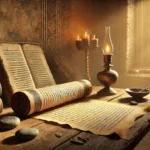 By understanding the historical roots of our modern religious practices, we can gain a deeper appreciation for the diversity and richness of human spirituality. This knowledge also allows us to better appreciate the connections between different belief systems and fosters interfaith dialogue.
By understanding the historical roots of our modern religious practices, we can gain a deeper appreciation for the diversity and richness of human spirituality. This knowledge also allows us to better appreciate the connections between different belief systems and fosters interfaith dialogue.

